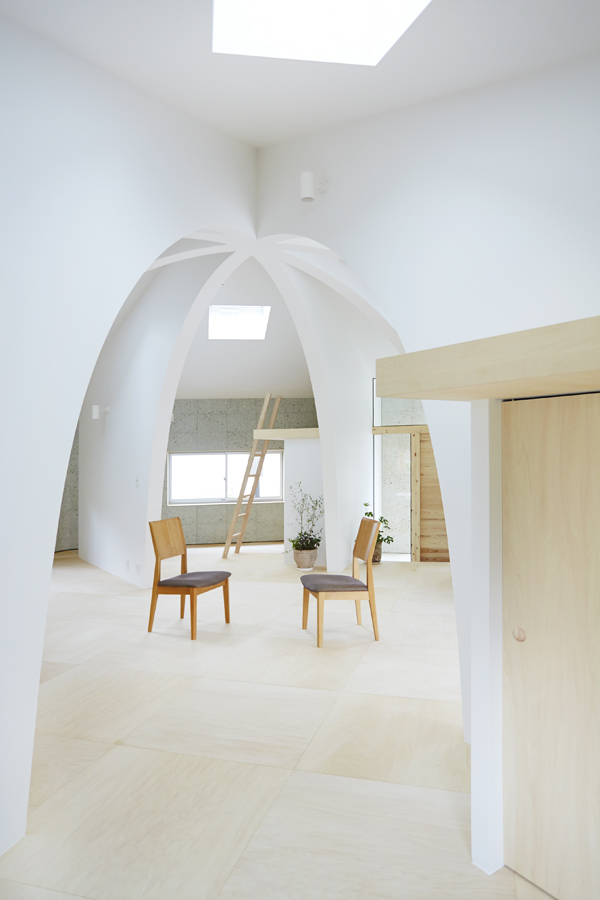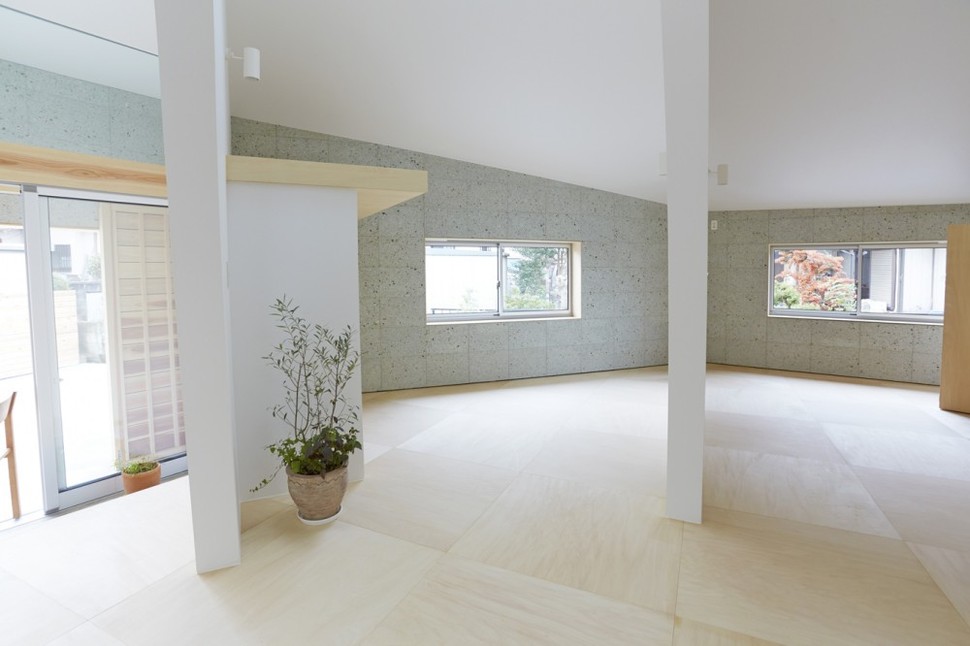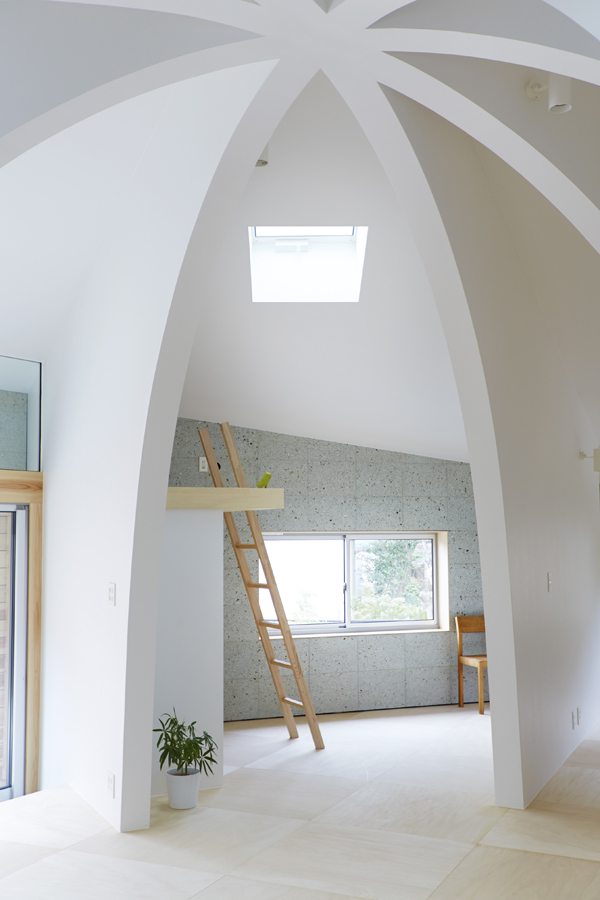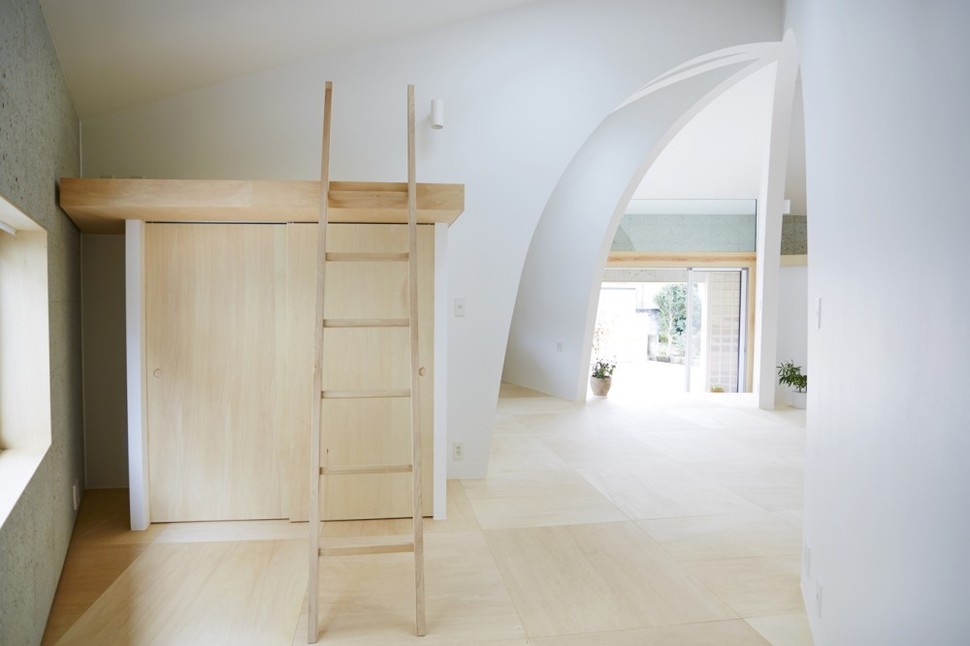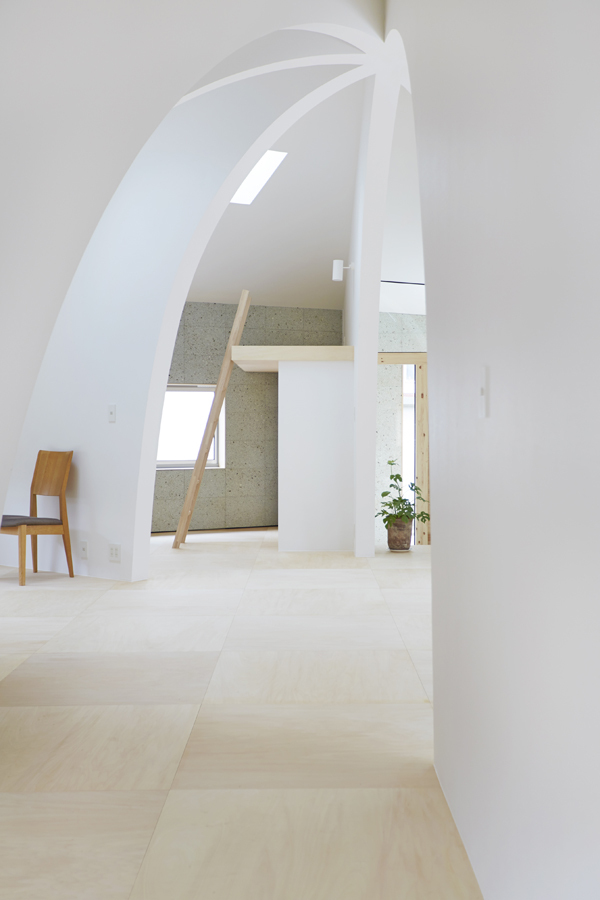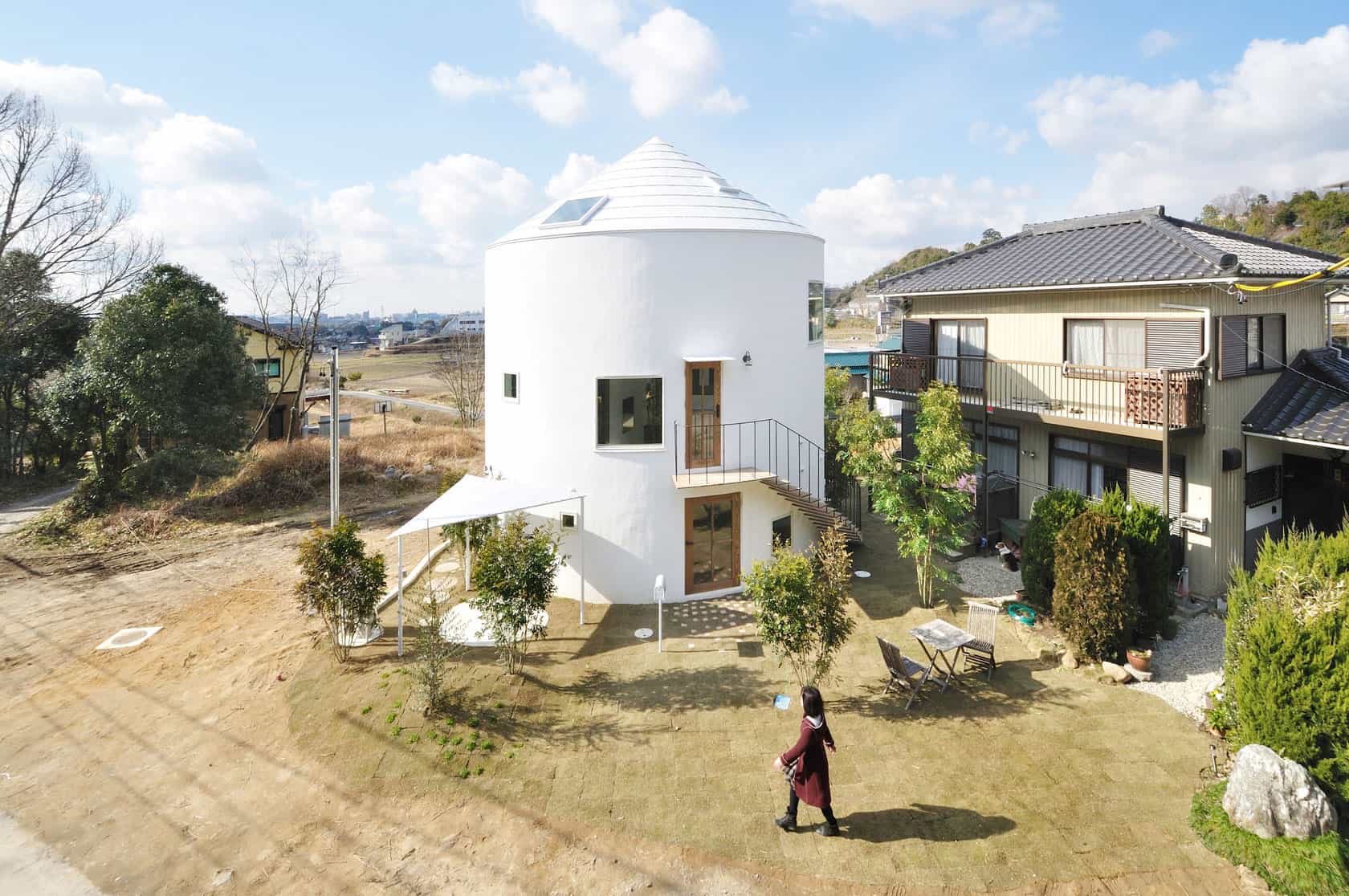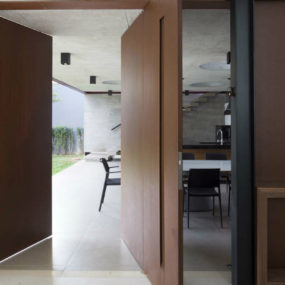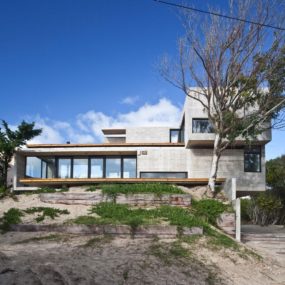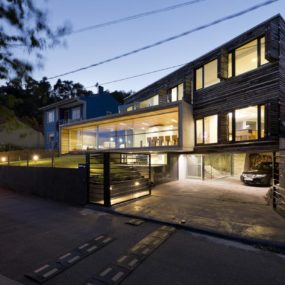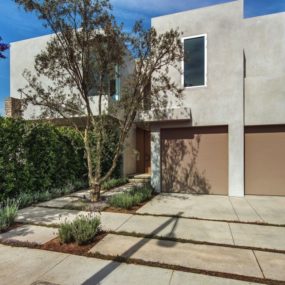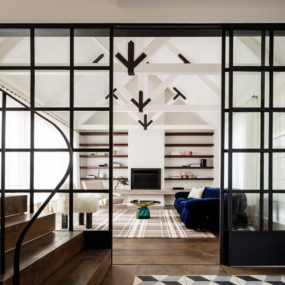
Built in the small Japanese city of Tochigi, this home blends two very different types of residential architecture in a clean and efficient manner. On the outside, it’s a low and irregularly-shaped polygon, with similarly geometric garden and patio areas. Within those angular walls, however, a system of innovative room divisions form a tall domed living arrangement, tricking the eyes into seeing a round abode. Designed by Hiroyuki Shinozaki Architects, a firm based in Tokyo, the home exhibits its creators’ flair for unique space divisions, helping to effectively open and enliven its fairly compact insides. Each individual resident retains their privacy and autonomy because of smart wall angles, but the dwelling is effectively a single continuous space.
In addition to purely architectural methods to distinguish this home from other similar modern structures, visual design and decor also play a role. To keep the unusual house down-to-earth (as well as low-cost), its fixtures are made of relatively simple materials like plywood. The kitchen counter is made of just two wall-mounted boards, with minimal shelving above taking the place of cabinetry below. Space-conscious solutions are also present, like a single furniture piece that serves as a closet and bed. Despite its unorthodox shapes and relatively small size for an entire family, it still feels like home.
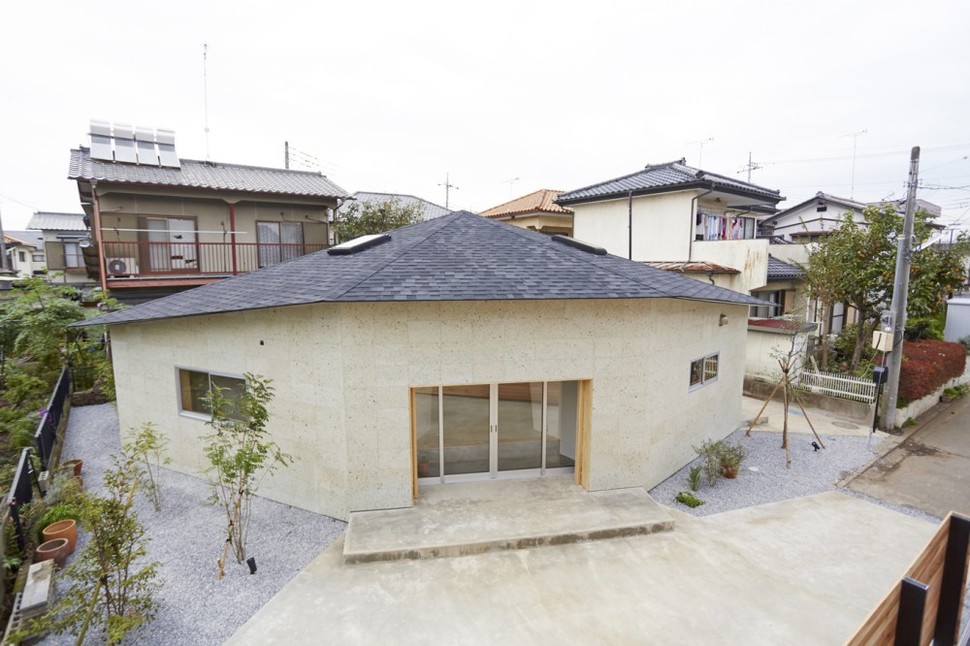
On the outside, this family home has angled walls and roof sections, enclosing a vaguely oval shape. Its property is sculpted to fit the color scheme and general exterior appearance of the building as well.
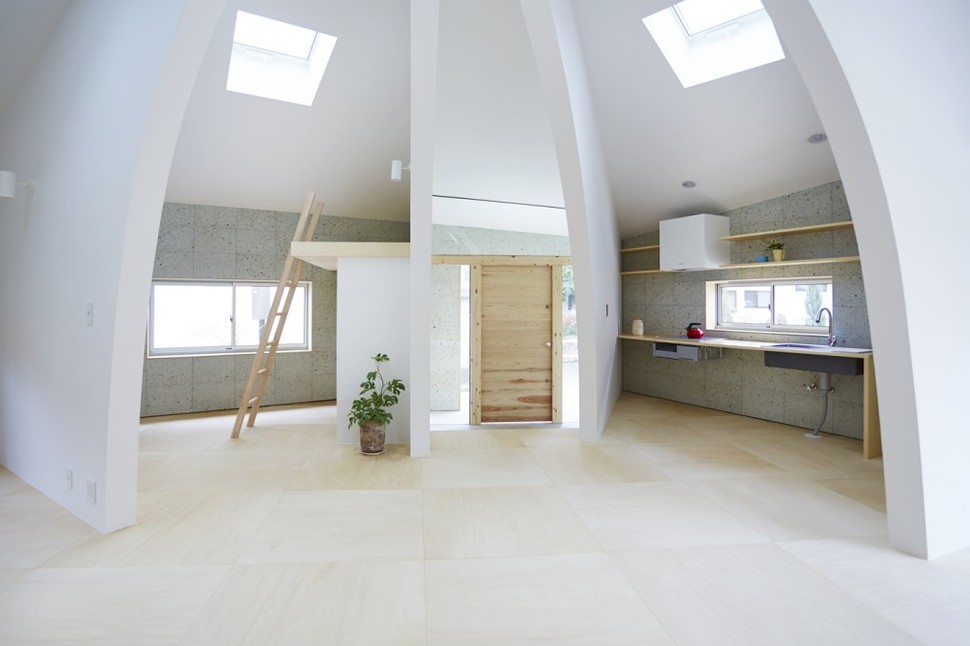
An unpretentious plywood door is set inside one set of sloping interior walls, forming a small entry area.

Each irregularly spaced wall angle of the house has a domed wall element stemming from it, creating a large central room with other open rooms spaced around it.
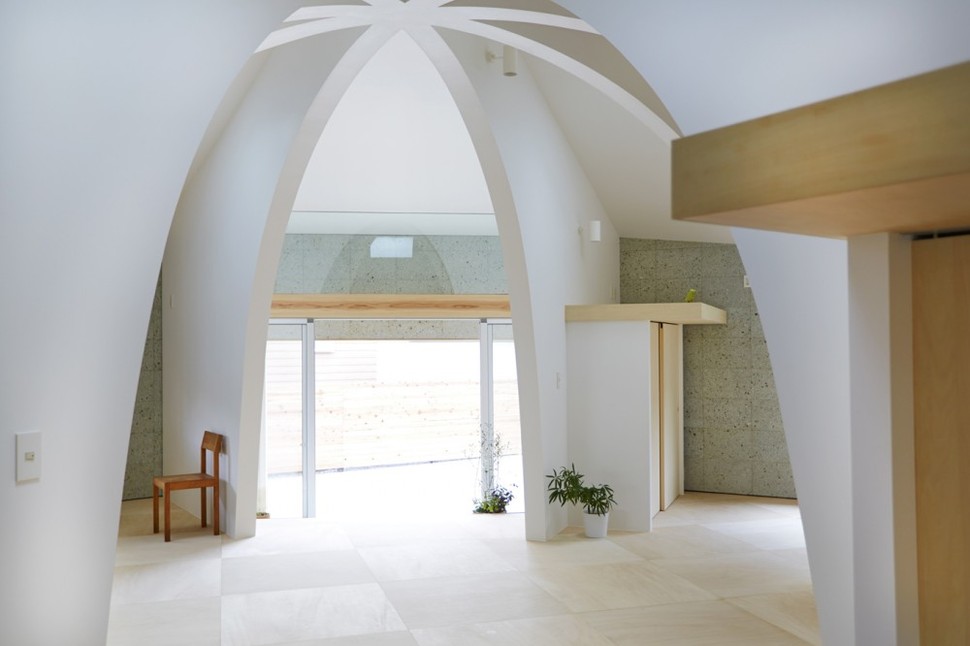
The rear door is wider and made of sliding glass, allowing a view of outdoor living space and neighboring homes beyond. Each doorway and most of the house’s furniture installations have solid wooden awnings extending past their top edges.
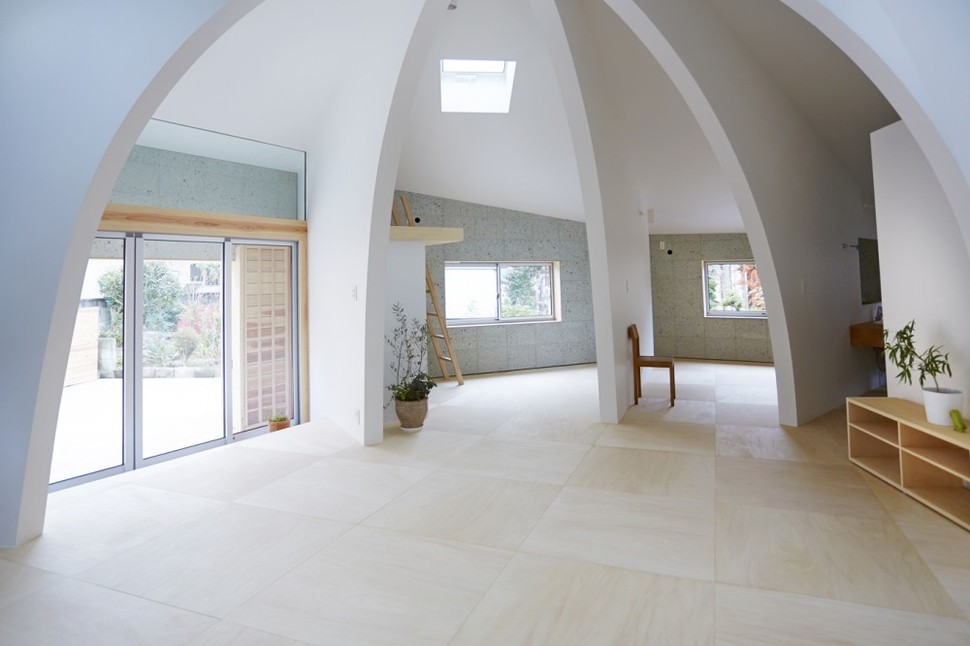
The flooring of the airy home is made up of perpendicularly-opposed square wood tiles which strike a balance in color between the white walls and tan accent wood found throughout.
